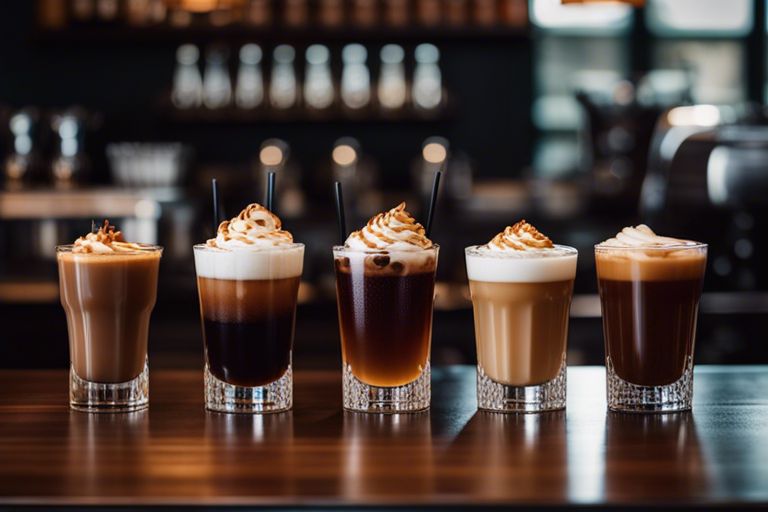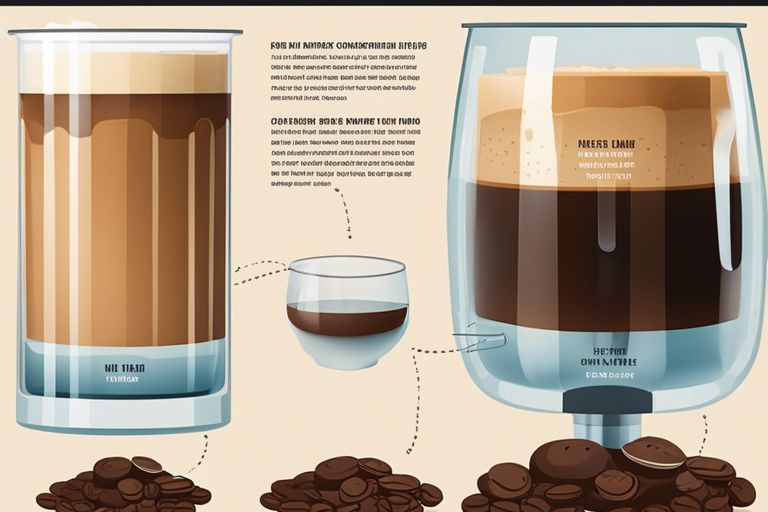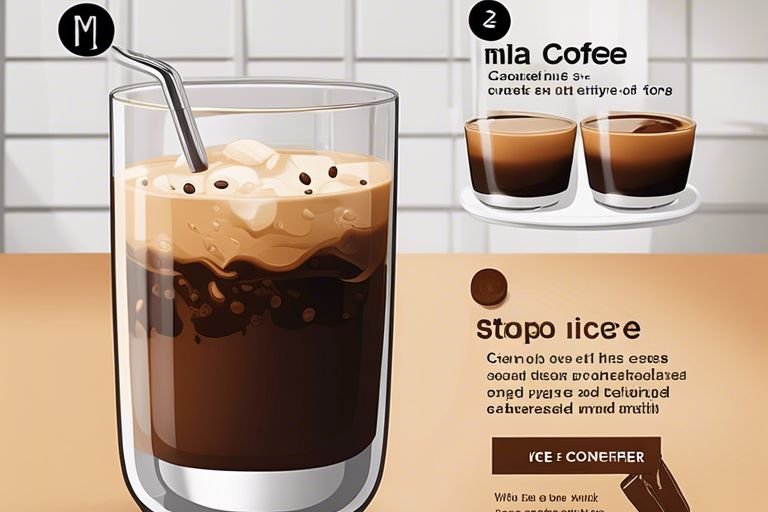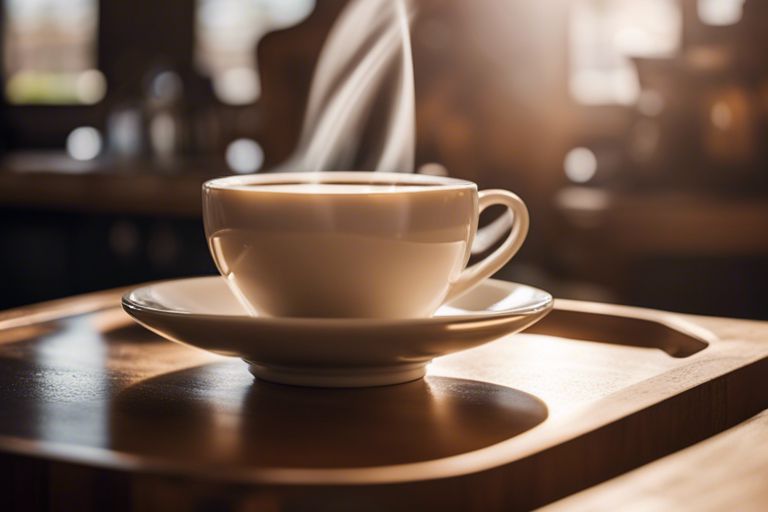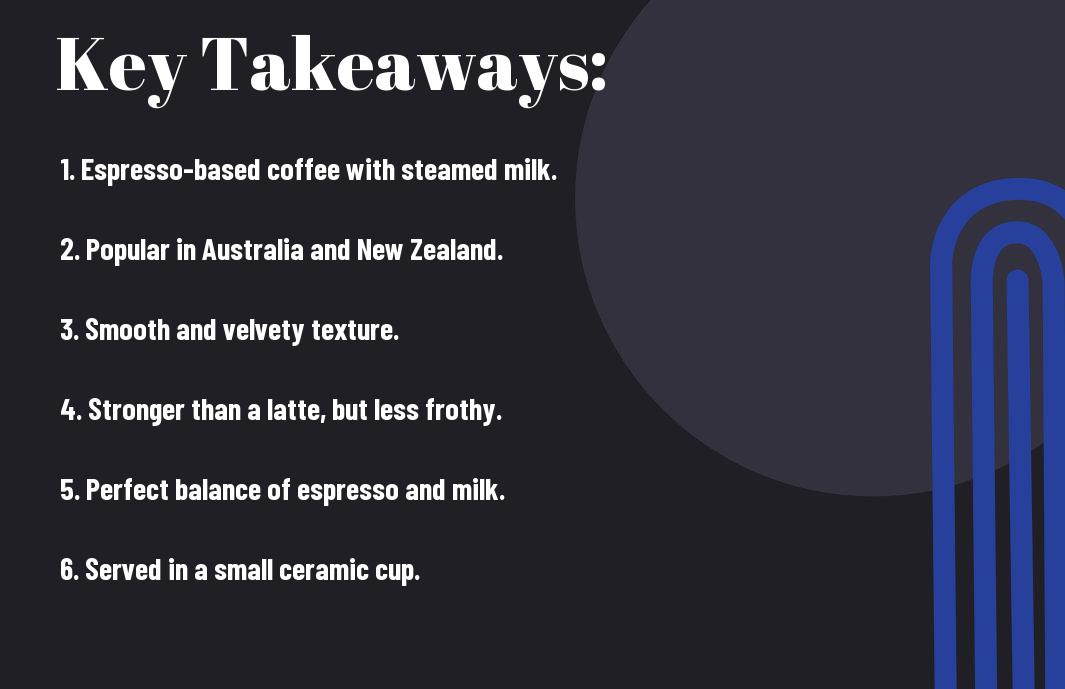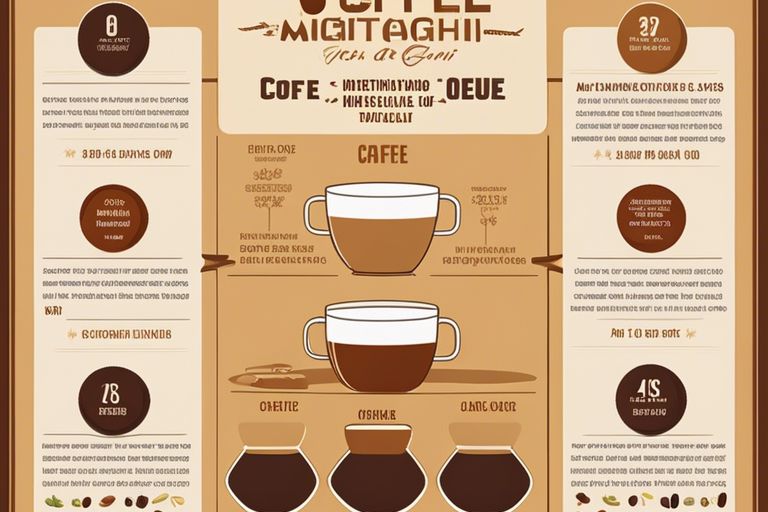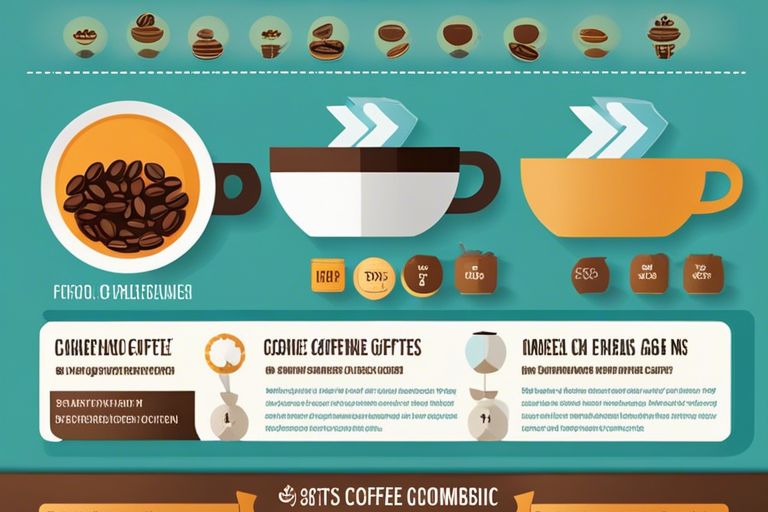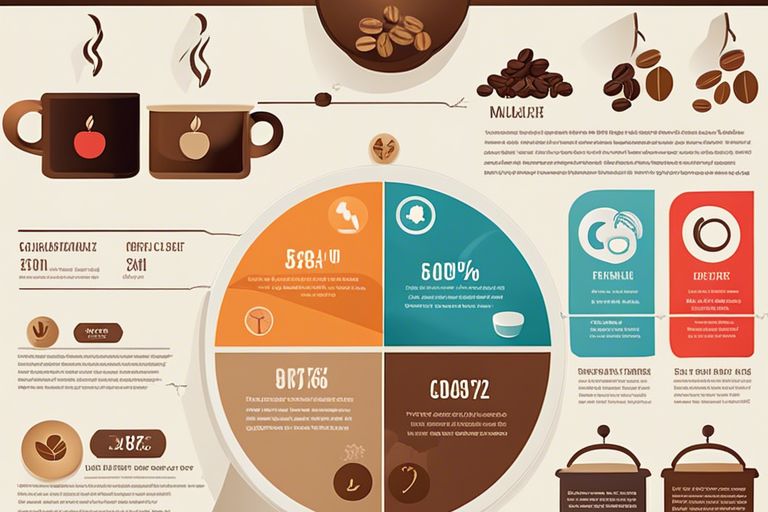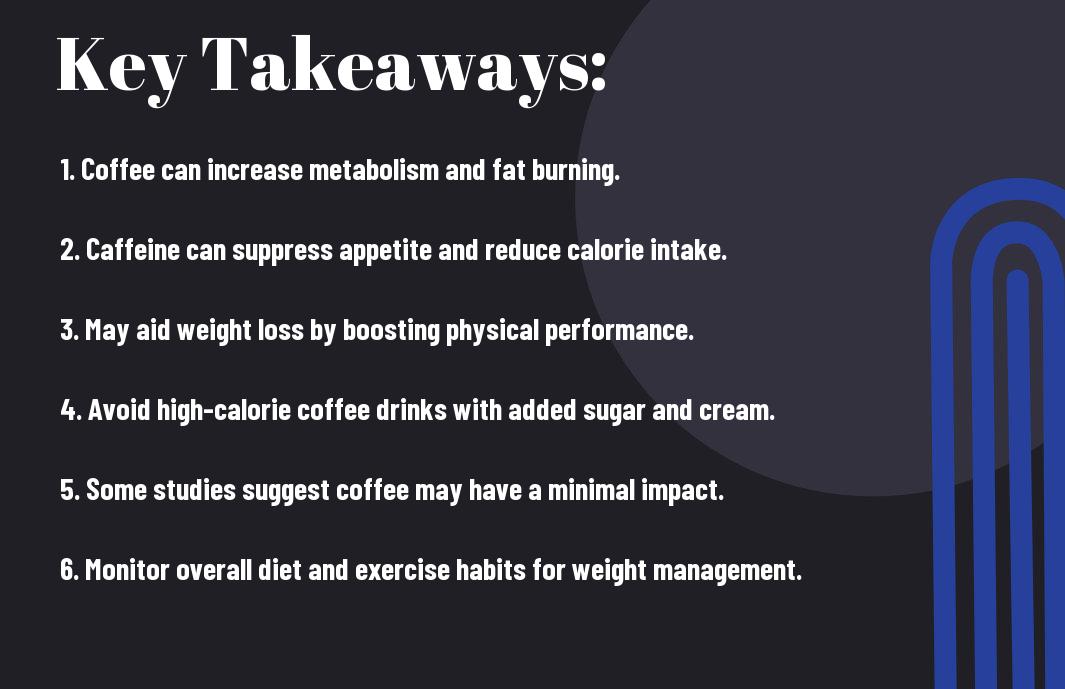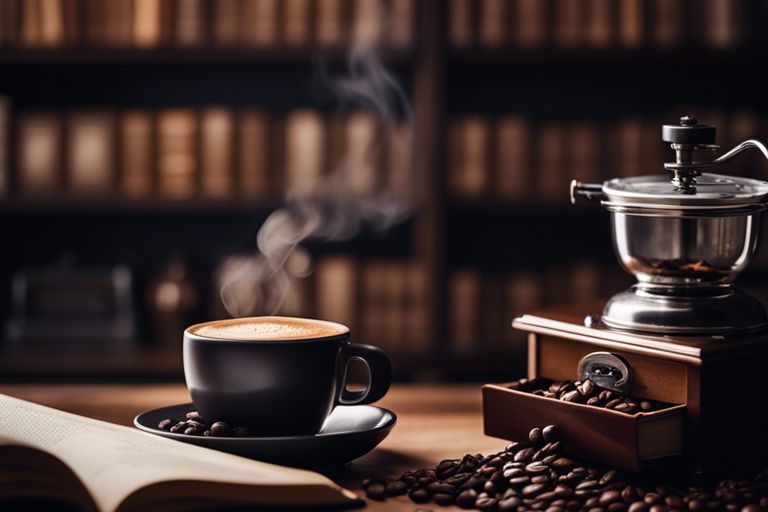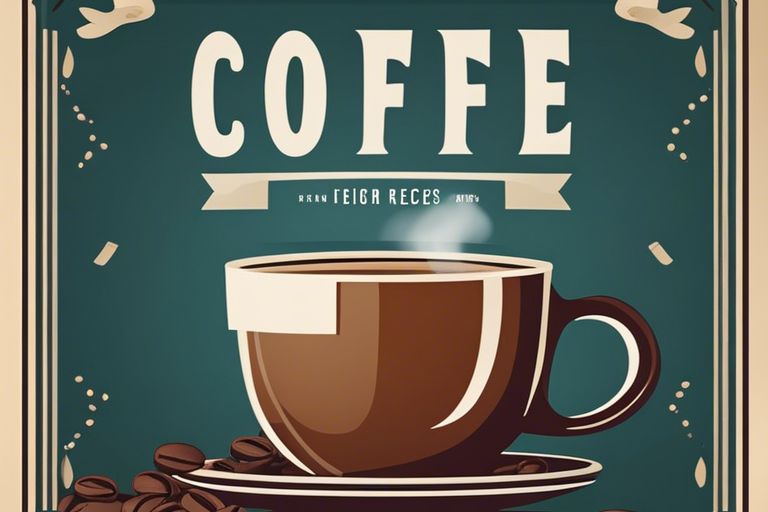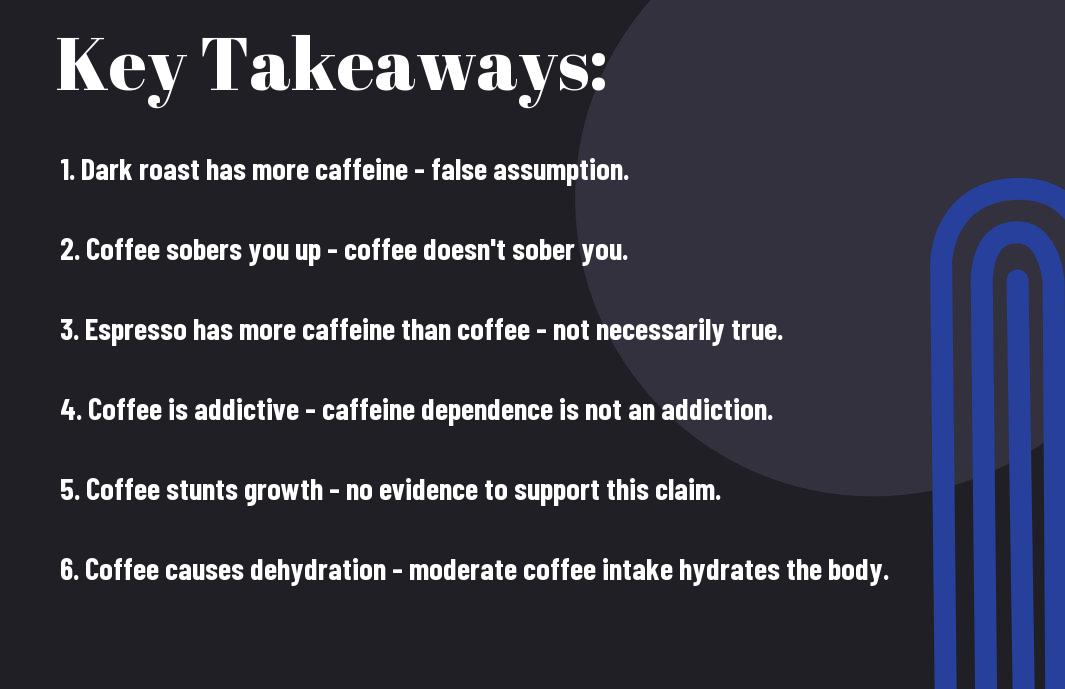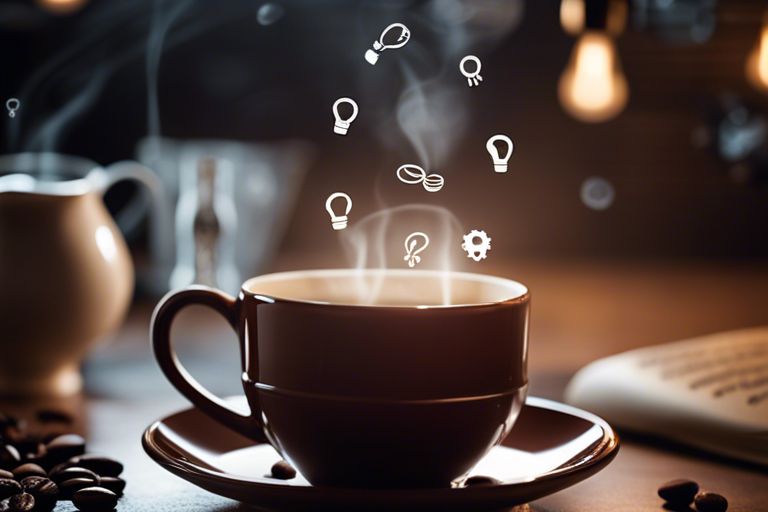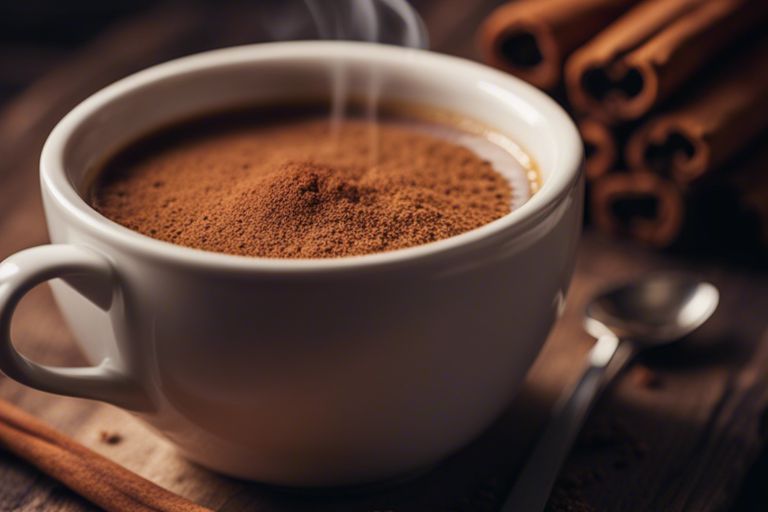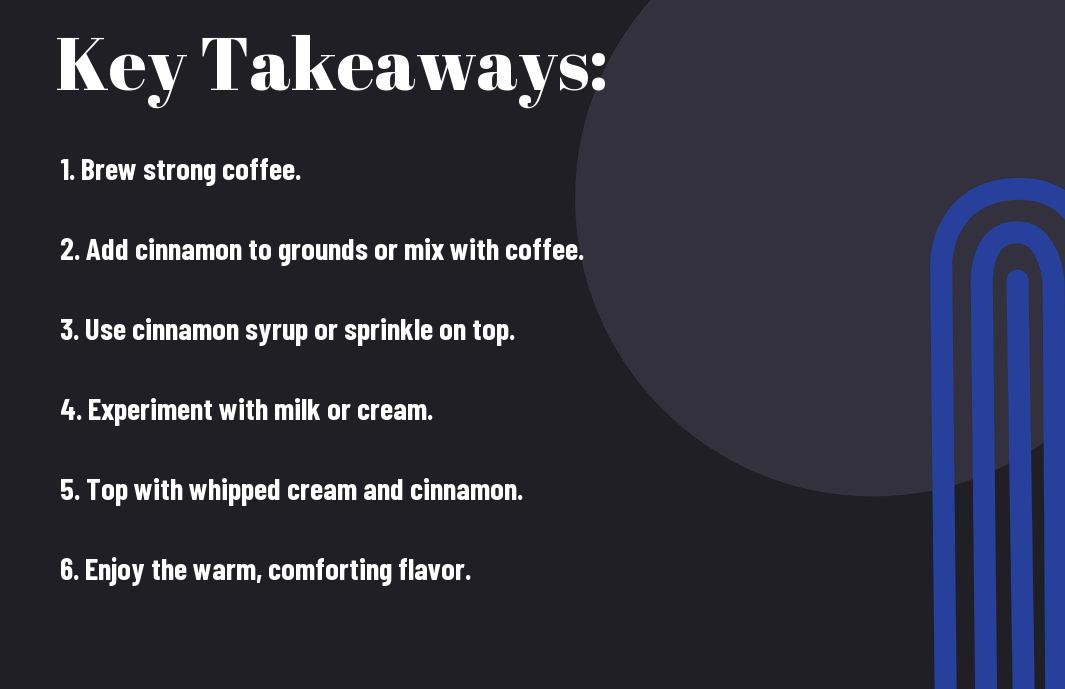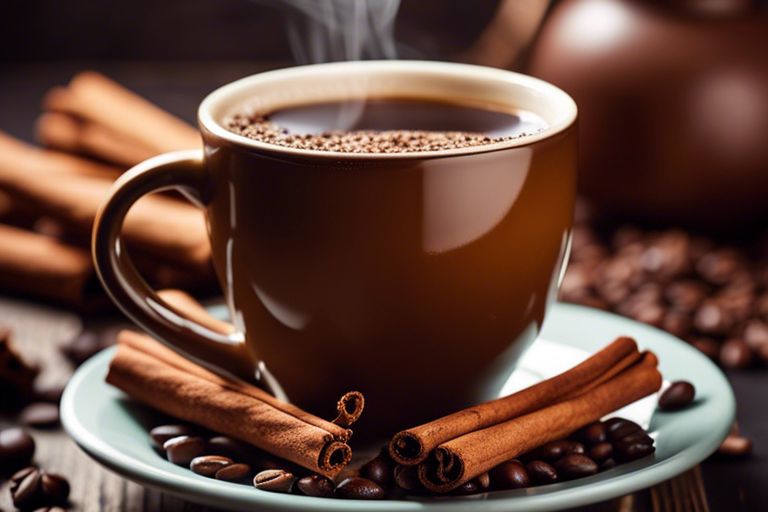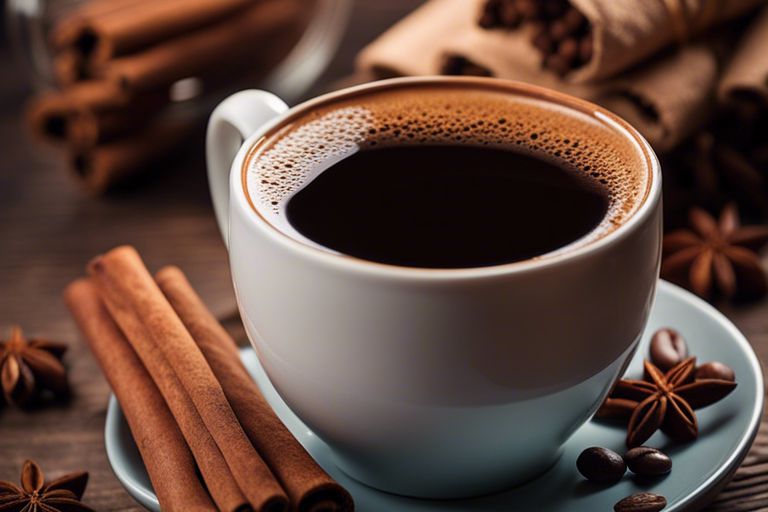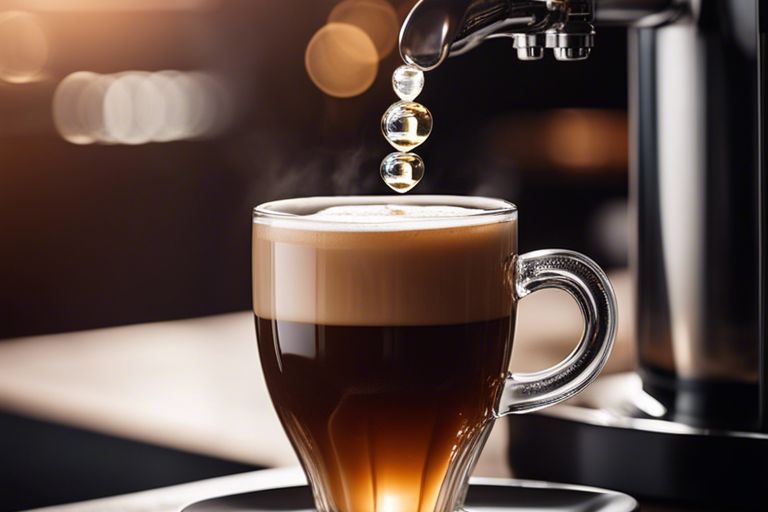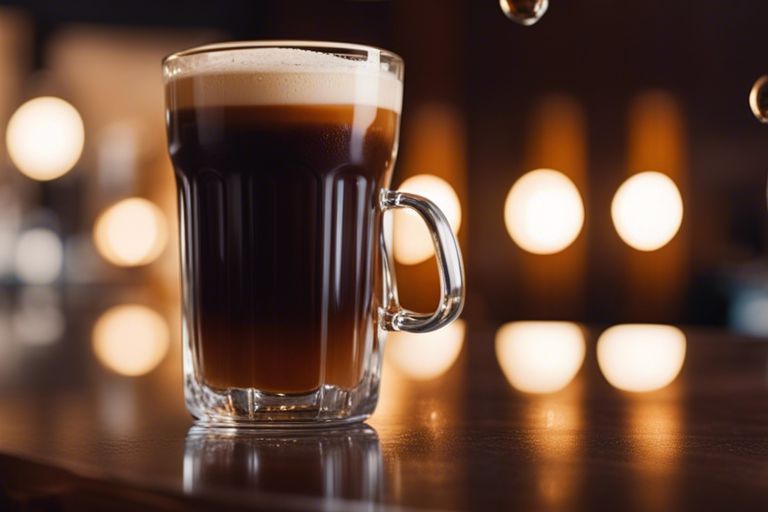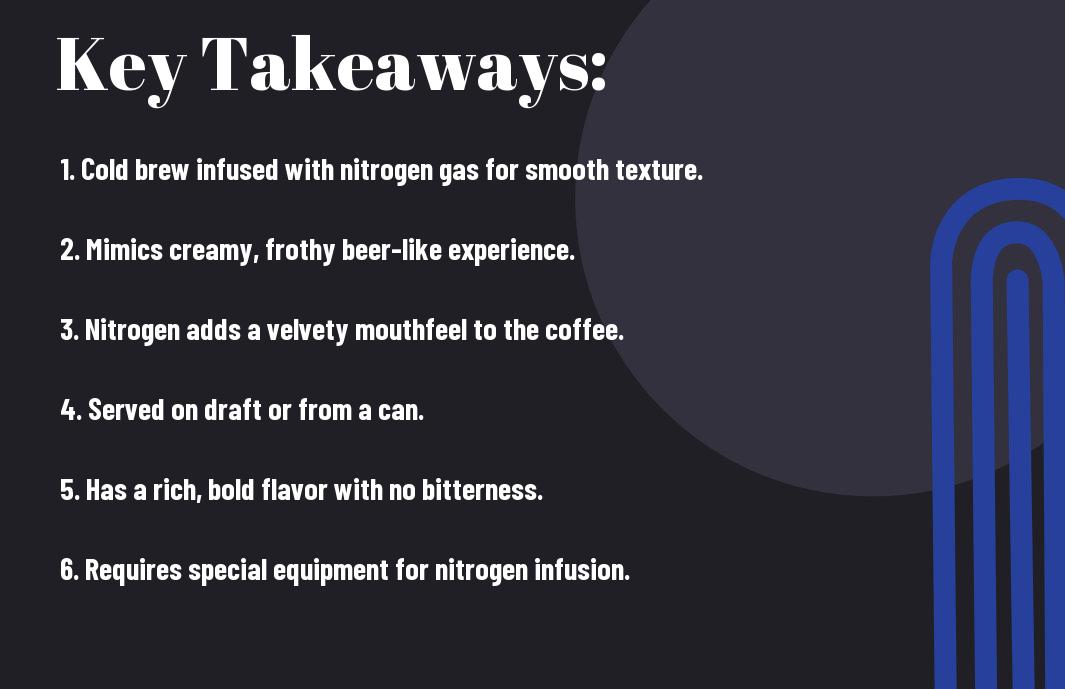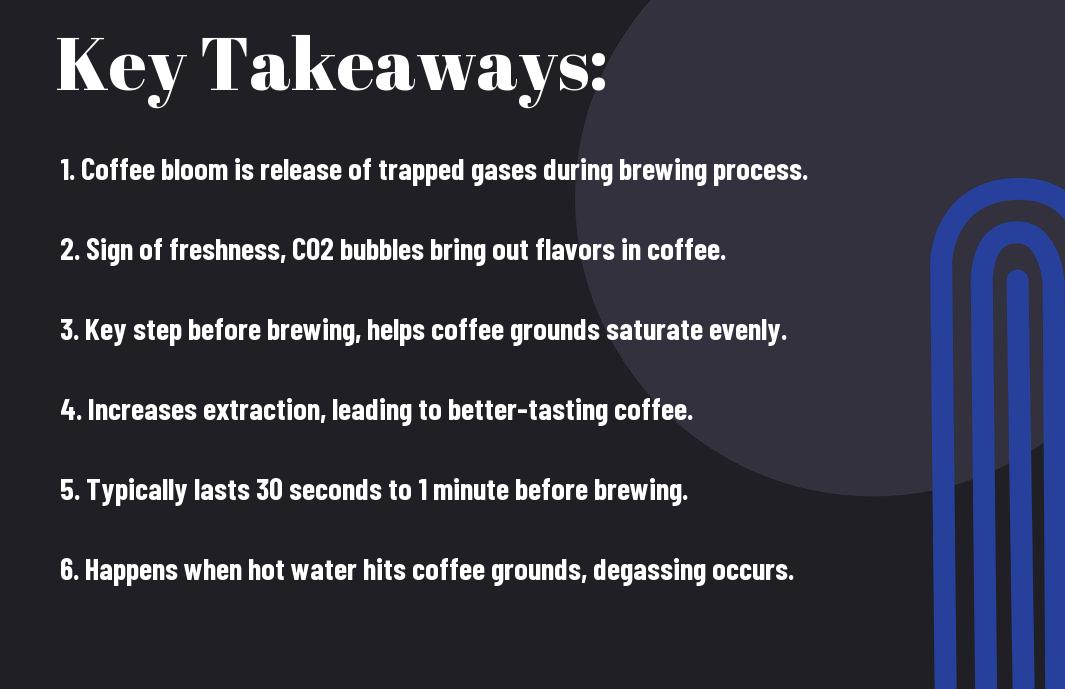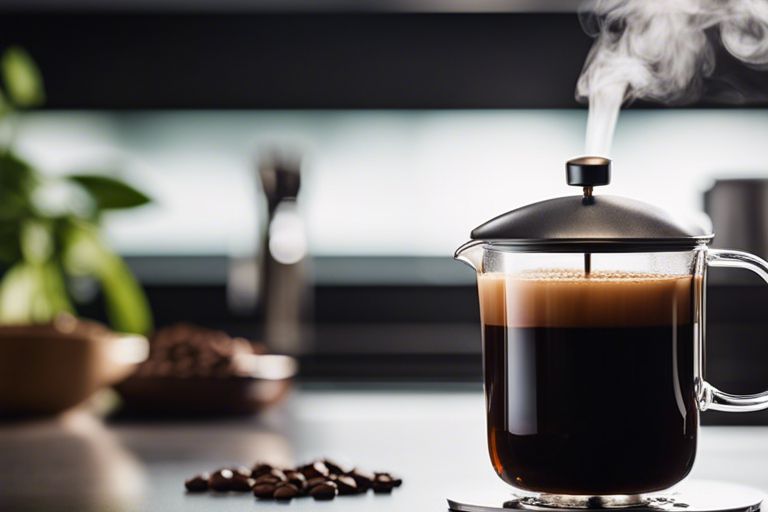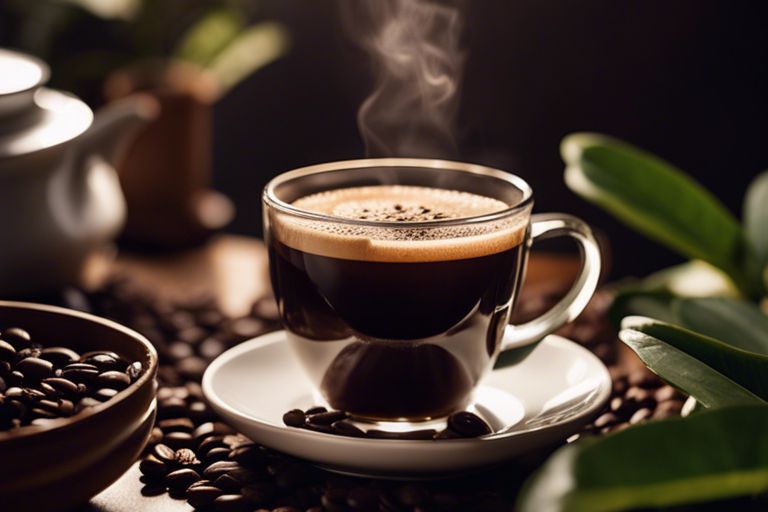With the rise of creative drink concoctions, coffee cocktails have become increasingly popular among coffee aficionados and cocktail enthusiasts alike. This blog post will explore some of the most popular and delicious coffee-based cocktails that you can enjoy whether you need a morning pick-me-up or a boozy evening treat. From classic espresso martinis to unique cold brew creations, there is a coffee cocktail out there to suit every taste preference.
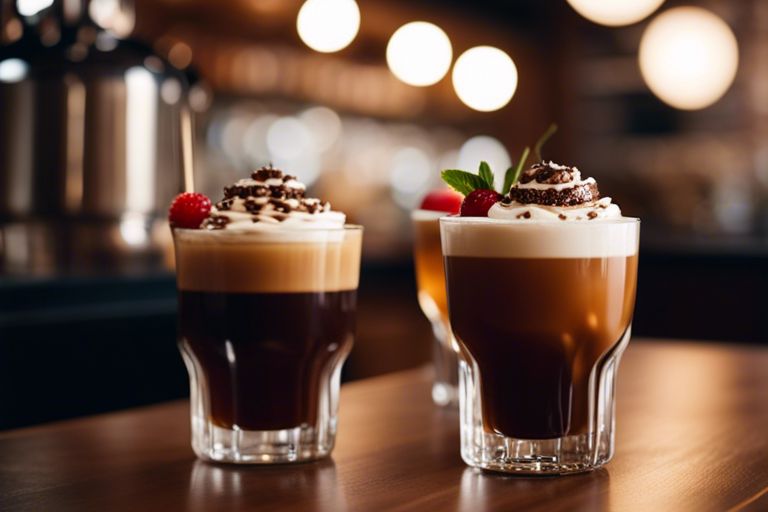
Key Takeaways:
- Espresso Martini: A popular coffee cocktail made with espresso, vodka, coffee liqueur, and simple syrup. It is a perfect balance of caffeine and alcohol.
- Irish Coffee: This classic cocktail combines hot coffee with Irish whiskey, sugar, and topped with whipped cream. It is a cozy drink perfect for cold weather.
- White Russian: A creamy coffee cocktail made with vodka, coffee liqueur, and cream. It is a sweet and indulgent drink enjoyed by many.
The Classics
Before we look into some of the trendiest coffee cocktails of the moment, let’s take a moment to appreciate the classics. These timeless coffee cocktails have withstood the test of time and continue to be popular choices for coffee and cocktail lovers alike.
Espresso Martini
Espresso – the star of this classic cocktail, the Espresso Martini is a luxurious blend of rich espresso, vodka, coffee liqueur, and simple syrup. The combination of the bold coffee flavor with the kick of vodka makes this cocktail a favorite for those looking for a sophisticated yet energizing drink.
Caffè Corretto
With origins in Italy, Caffè Corretto translates to “corrected coffee.” This traditional drink is made by adding a shot of grappa, sambuca, or other spirits to a shot of espresso. The result is a warm and strong coffee cocktail that is perfect for sipping after a meal or during a chilly evening.
It’s a common custom in Italy to enjoy Caffè Corretto as a digestive aid, believed to help with digestion after a heavy meal. The addition of the spirit “corrects” the coffee and adds an extra kick to the drink, making it a popular choice for those looking to end a meal on a high note.

Sweet Treats
You can explore a variety of delicious and sweet coffee cocktails in the world of mixology. If you’re looking to experiment with some sweet and indulgent flavors, try out some of the options from this list of 30 Coffee Cocktails to Kick Off or Cap Off Your Evening.
Mocha Martini
With a Mocha Martini, you get the best of both worlds—coffee and chocolate. This decadent cocktail combines the rich flavors of coffee with the creamy sweetness of chocolate, making it a delightful treat for those with a sweet tooth. It’s the perfect drink to enjoy after dinner or as a dessert on its own.
Coffee Old Fashioned
An enticing twist on the classic Old Fashioned cocktail, the Coffee Old Fashioned infuses the bold flavors of coffee with the smoky notes of whiskey and a hint of sweetness. This sophisticated drink is sure to impress any coffee lover looking for a unique and flavorful cocktail experience. Another popular variation includes using cold brew coffee for a smoother and more subtle coffee flavor in the drink.
Irish Coffee
Martini lovers rejoice with the classic Irish Coffee cocktail, a delightful blend of rich coffee, smooth Irish whiskey, and sweet cream. This beloved cocktail is perfect for cozy nights by the fireplace or lazy Sunday afternoons. The warmth of the coffee and whiskey combined with the indulgent cream creates a comforting and satisfying drink that’s perfect for any occasion.
Fruity Twists
Coffee Colada
Colada- This tropical coffee cocktail is a delightful blend of creamy coconut, rich espresso, and a splash of pineapple juice. The refreshing flavors come together perfectly to create a drink that is both invigorating and soothing. This is a great choice for those hot summer days when you want a little pick-me-up with a fruity twist.
Mocha Frappuccino Martini
The- Combining the best of both worlds, the Mocha Frappuccino Martini is a luxurious cocktail that’s perfect for those who love the classic flavors of coffee and chocolate. This indulgent drink features a velvety blend of espresso, chocolate liqueur, and vodka, topped with a dollop of whipped cream. It’s like sipping on a decadent dessert while getting a buzz at the same time.
To- The Mocha Frappuccino Martini is a great option for those who enjoy sweet and creamy cocktails with a kick of caffeine. It’s a fun and festive drink that’s sure to be a hit at any gathering, whether you’re hosting a brunch or a fancy cocktail party.
Caffè con Panna with a Fruit Twist
With- This delightful twist on the classic Caffè con Panna adds a fruity element to the traditional whipped cream-topped espresso. By incorporating a hint of fruit syrup, such as raspberry or peach, into the whipped cream topping, you can elevate this simple drink into a sophisticated and flavorful concoction that is both sweet and refreshing.
Plus- The Caffè con Panna with a Fruit Twist is a great way to experiment with different flavor combinations and add a touch of sweetness to your regular coffee routine. It’s an easy yet impressive drink to make at home or enjoy at your favorite coffee shop.
Spicy Delights
Espresso con Chili
Chili lovers rejoice, as the Espresso con Chili is the perfect coffee cocktail for those who enjoy a spicy kick in their drink. This unique concoction combines the intense flavors of espresso with the heat of chili peppers, creating a truly unforgettable experience for your taste buds.
All you need is a shot of freshly brewed espresso mixed with a dash of chili-infused syrup or a sprinkle of cayenne pepper for that extra zing. This bold and fiery coffee cocktail is guaranteed to awaken your senses and leave you craving for more.
Mexican Coffee
On the hunt for a delicious coffee cocktail with a touch of spice? Look no further than the classic Mexican Coffee. This delightful concoction features a combination of rich coffee, Kahlua or coffee liqueur, and a hint of cinnamon for that unmistakable Mexican flair.
Spicy and sweet, this warming beverage is perfect for cozy nights in or as a pick-me-up after a long day. Garnish with a dollop of whipped cream and a sprinkle of cinnamon for an indulgent treat that will transport you straight to the streets of Mexico.
Spicy Mocha
The Spicy Mocha is a tantalizing twist on the traditional mocha, adding a dash of spice to your favorite chocolatey coffee drink. This invigorating blend of espresso, steamed milk, chocolate syrup, and a hint of chili powder or cayenne pepper creates a harmonious balance of flavors that will leave you wanting more.
The combination of rich, velvety chocolate with a subtle kick of spice makes the Spicy Mocha a perfect choice for those who enjoy a little excitement in their coffee. It’s the ideal drink to shake up your usual coffee routine and add a bit of heat to your day.
Creamy Concoctions
Coffee Creamsicle
Keep your taste buds captivated with the tantalizing blend of coffee and creamy goodness in a Coffee Creamsicle cocktail. This delightful concoction combines the bold flavors of coffee with the sweet, citrusy notes of orange. The addition of cream enhances the smooth texture, making it a perfect choice for those who enjoy a touch of sweetness in their coffee cocktails.
Vanilla Coffee Martini
Coffee enthusiasts looking for a sophisticated and indulgent drink will appreciate the Vanilla Coffee Martini. This classic cocktail is a harmonious fusion of rich coffee, smooth cream, and aromatic vanilla. The combination of these flavors creates a luxurious experience that is perfect for sipping on a special occasion or as an after-dinner treat.
Coffee connoisseurs will revel in the Vanilla Coffee Martini’s balanced blend of bitter coffee and sweet vanilla, making it a popular choice for those who enjoy a more refined and upscale coffee cocktail.
Brandy Coffee
For a more robust and spirited coffee cocktail, turn to the Brandy Coffee. This indulgent drink combines the bold flavors of coffee with the rich, warming notes of brandy. The addition of cream adds a velvety smoothness to the beverage, creating a decadent treat that is perfect for cozy evenings or as a dessert cocktail.
Brandy Coffee is a favorite among many cocktail enthusiasts for its bold and complex flavor profile. The combination of coffee, brandy, and cream results in a drink that is both comforting and invigorating, making it a must-try for those looking to elevate their coffee cocktail experience.
International Inspirations
Italian Coffee Cocktail
Your journey into the world of coffee cocktails would not be complete without trying an Italian Coffee Cocktail. This decadent drink combines the rich flavors of espresso, amaretto liqueur, and whipped cream. It is the perfect after-dinner treat for those who enjoy a touch of sweetness with their coffee.
Turkish Coffee Martini
For a unique twist on the classic martini, consider trying a Turkish Coffee Martini. This exotic cocktail blends the strong flavors of Turkish coffee with vodka, coffee liqueur, and a hint of cardamom. The result is a sophisticated and aromatic drink that will transport your taste buds to the bustling streets of Istanbul.
This tantalizing cocktail is a perfect choice for those who appreciate the bold flavors of Turkish coffee and enjoy a more adventurous cocktail experience. The addition of cardamom adds a warm and spicy note that complements the rich coffee flavors, creating a truly unforgettable drink.
Cuban Coffee
This delightful coffee cocktail takes inspiration from the vibrant culture of Cuba. Cuban Coffee is known for its potent mix of espresso, sugar, and dark rum, creating a strong and sweet concoction that packs a punch. Served either hot or cold, this energizing drink is a favorite among coffee and cocktail enthusiasts alike.
Inspirations from Cuban Coffee can be found in many coffee shops around the world, showcasing the irresistible combination of espresso and rum. Whether you prefer your Cuban Coffee with a twist or enjoy it traditional-style, this iconic drink is sure to leave a lasting impression on your palate.
Summing up
From above, we can see that there are several popular coffee cocktails that have gained popularity among coffee enthusiasts. Whether you prefer the classic Espresso Martini, the rich and creamy Irish Coffee, or the refreshing Coffee Spritz, there is a coffee cocktail to suit every taste preference. These unique blends of coffee and alcohol create a delightful combination of flavors that are perfect for both social gatherings and cozy nights in.
FAQ
Q: What are coffee cocktails?
A: Coffee cocktails are beverages that combine coffee with various alcoholic spirits, liqueurs, and other ingredients to create a flavorful and often indulgent drink.
Q: What are some popular coffee cocktails?
A: Some popular coffee cocktails include Espresso Martini, Irish Coffee, White Russian, and Mocha Martini.
Q: How are coffee cocktails made?
A: Coffee cocktails are typically made by combining brewed coffee or espresso with spirits such as vodka, rum, or Irish cream, along with sweeteners, flavorings, and sometimes cream or milk.
Q: Are coffee cocktails only served hot?
A: While some coffee cocktails, like Irish Coffee, are served hot, many coffee cocktails can also be enjoyed cold or over ice, depending on the recipe and personal preference.
Q: Can I make coffee cocktails at home?
A: Yes, you can easily make coffee cocktails at home with the right ingredients and tools. There are many recipes available online for you to try out and customize to your liking.
